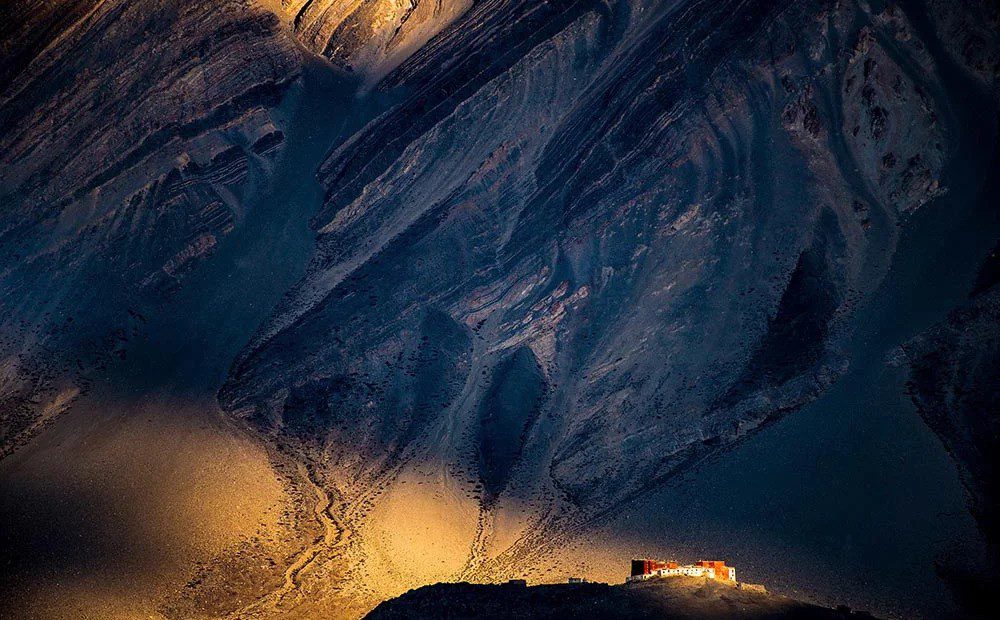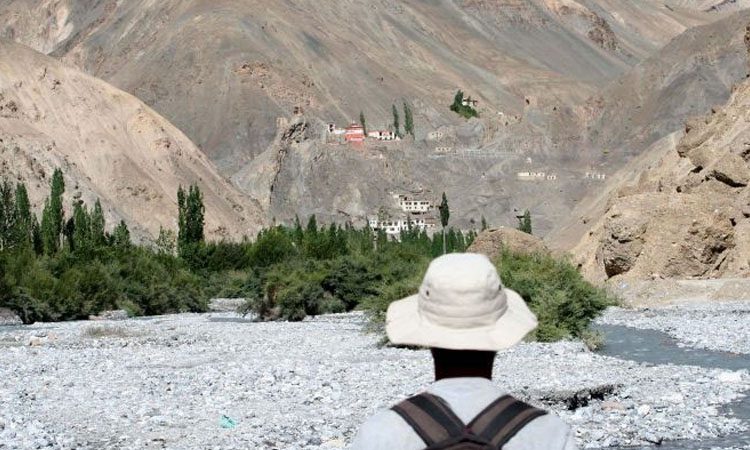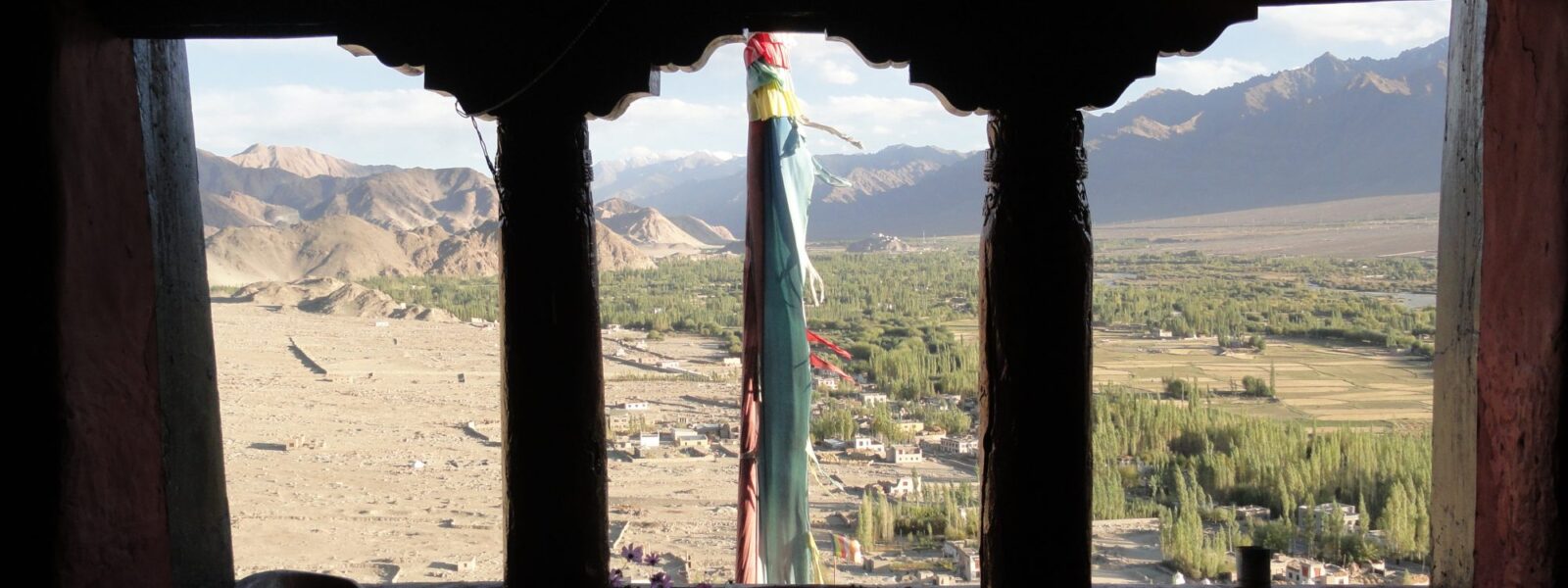Ladakh ancient caravanserais, situated in a region known for its rugged beauty and towering mountain ranges, played a crucial role in the ancient trade routes that connected India to Central Asia. These trade routes, commonly referred to as the Silk Road, were the lifeblood of international commerce for centuries. Although Ladakh itself may not have had many formal caravanserais like those seen in Persia or Central Asia, the region was dotted with rest stops, monasteries, and fortified towns that provided shelter and sustenance to the traders and their caravans. In this article, we explore the historical significance of Ladakh’s role in the Silk Route, how traders utilized rest stops in the harsh terrain, and the legacy of these ancient trade networks.
1. The Historical Importance of Ladakh on the Silk Route
Ladakh was more than just a remote region in the Himalayas—it was a crossroads for ancient traders traveling between India, China, Central Asia, and beyond. The strategic location of Ladakh along the trans-Himalayan trade routes made it a vital link in the Silk Route. Goods such as silk, spices, precious stones, and tea passed through this region, and the traders who carried these goods needed safe places to rest and resupply.
1.1 Ancient Trade Routes That Passed Through Ladakh
The most prominent trade route passing through Ladakh was the one connecting Leh (the capital of Ladakh) to Yarkand and Kashgar in Xinjiang, China. Traders followed a network of routes through mountain passes like Khardung La and Chang La, traversing the rugged terrain with their yak caravans. The Leh-Yarkand route was particularly significant as it linked the Indian subcontinent with Central Asia, allowing goods to flow between the two regions.
Other key routes passed through the Zanskar Valley and Nubra Valley, serving as essential arteries for trade between Ladakh, Tibet, and the Indian plains. These routes were perilous, with traders facing threats such as avalanches, altitude sickness, and extreme weather conditions. The necessity for frequent stops along these routes gave rise to informal rest areas, monasteries, and fortified towns where traders could seek shelter.
1.2 How Traders Found Rest Along Ladakh’s Trade Routes
While formal caravanserais were not as common in Ladakh as they were in other parts of the Silk Road, traders found places to rest at Buddhist monasteries, fortified towns, and local settlements. These locations offered the basic necessities of life—food, water, and a safe place to rest for the night.
Monasteries like Hemis, Thiksey, and Lamayuru became key points of refuge for travelers. These monasteries often offered hospitality to weary traders, providing food and shelter in exchange for donations. The fortresses of Ladakh, such as the Leh Palace and Basgo Fort, also served as places of safety, where traders could stop and seek protection from bandits or harsh weather conditions.
2. Architectural Features of Rest Stops in Ladakh
The rest stops found along the Ladakh trade routes were typically smaller and more informal than the grand caravanserais seen elsewhere along the Silk Road. However, they shared similar architectural features aimed at providing safety and comfort to traders in one of the world’s most challenging environments.
2.1 Features of Fortified Towns and Monasteries in Ladakh
Ladakh’s fortified towns and monasteries were built with thick stone walls to insulate against the cold and to provide protection from possible raids. These structures often had central courtyards where animals could be kept, along with small rooms for sleeping and storage. Monasteries were typically situated on elevated ground, providing strategic advantages both for defense and for access to fresh water.
The architecture of these rest stops was functional, designed to withstand the harsh high-altitude desert climate. Buildings were constructed with local materials such as stone, mud, and timber, and the interiors were often simple but sturdy, with small fireplaces to provide warmth during the freezing nights.
2.2 How These Structures Adapted to Ladakh’s Environment
The high altitude and extreme climate of Ladakh posed unique challenges to traders and the communities that supported them. The architecture of rest stops in Ladakh was therefore designed with practicality in mind. Thick walls provided natural insulation, and flat roofs were built to support heavy snowfalls. Water sources were often located nearby, as access to water was a critical consideration in such a dry environment.
Fortresses and monasteries were often located near rivers or streams, ensuring that traders and their animals had a steady supply of water. The placement of rest stops also considered the altitude—traders would need to acclimate to the heights, and rest stops offered an opportunity to recover from the physical toll of high-altitude travel.
3. Cultural and Economic Impact of Ladakh’s Role in the Silk Route
The trade routes passing through Ladakh were not just economic highways—they were also channels of cultural exchange. Traders brought with them not only goods but also ideas, beliefs, and traditions, which greatly influenced Ladakh’s cultural heritage.
3.1 How Trade Shaped Ladakh’s Cultural Identity
The mix of influences from India, Tibet, and Central Asia is evident in Ladakh’s art, architecture, and religious practices. Buddhist monasteries became centers of cultural exchange, where not only monks but also traders from distant lands gathered. These monasteries played a key role in spreading Tibetan Buddhism throughout Ladakh, while also absorbing elements of the Hindu and Islamic cultures brought by traders from the Indian subcontinent and Persia.
The annual Hemis Festival, celebrated at Hemis Monastery, is an example of how Ladakh’s culture was enriched by its role in the Silk Road. This festival, with its colorful costumes, music, and dances, is a blend of religious and cultural elements that reflect Ladakh’s diverse heritage.
3.2 Economic Benefits of Trade Along the Silk Route
Trade along the Silk Road was crucial to the economic prosperity of Ladakh. The region’s strategic location meant that local rulers could charge tolls and taxes on goods passing through their territory, which in turn funded the construction of palaces, fortresses, and monasteries.
Goods such as pashmina wool, salt, silk, and spices passed through Ladakh, enriching local merchants and creating thriving marketplaces in towns like Leh. The influence of trade on Ladakh’s economy is still visible today, with many traditional crafts such as weaving, jewelry making, and metalwork rooted in the region’s history as a trade hub.

4. Legacy of Ladakh’s Role in the Silk Route
The Silk Route may have faded with the rise of modern transportation, but its legacy remains strong in Ladakh. The region’s cultural heritage, its Buddhist monasteries, and its ancient fortresses are lasting reminders of the time when traders from across the world passed through these mountain valleys.
4.1 Preservation of Ladakh’s Historical Monuments
Many of Ladakh’s monasteries and fortresses have been preserved and restored over the years, with some even recognized as UNESCO World Heritage sites. These historical monuments not only serve as important religious and cultural centers but also attract thousands of tourists every year, contributing to the region’s economy.
Efforts to preserve these sites have been led by both the Indian government and international organizations, recognizing the importance of Ladakh’s heritage in the broader history of the Silk Road. Leh Palace, for example, has been restored to reflect its former grandeur, offering visitors a glimpse into the life of Ladakh’s royal family during the height of Silk Route trade.
5. Exploring Ladakh’s Historical Sites Today
For modern travelers interested in following the footsteps of ancient traders, Ladakh offers a wealth of historical and cultural sites to explore. From Leh Palace to the monasteries that once offered refuge to weary merchants, these sites provide a window into Ladakh’s storied past.
5.1 Key Historical Sites to Visit in Ladakh
- Leh Palace: Built in the 17th century, this nine-story palace was once home to the royal family of Ladakh and served as a major hub along the trade routes.
- Hemis Monastery: The largest and wealthiest monastery in Ladakh, Hemis played a vital role in providing shelter to traders and monks alike. Its annual festival is a major draw for visitors.
- Thiksey Monastery: A stunning monastery perched on a hilltop, Thiksey is often referred to as “Mini Potala” because of its resemblance to the Potala Palace in Lhasa.
- Lamayuru Monastery: Often called the “Moonland of Ladakh,” Lamayuru is one of the oldest monasteries in the region and offers breathtaking views of the surrounding landscape.
5.2 Practical Tips for Exploring Ladakh’s Silk Route Heritage
- Best Time to Visit: The best time to explore Ladakh’s historical sites is from May to September, when the roads are clear and the weather is milder.
- Transportation: Most historical sites can be reached by road, but some monasteries and remote areas may require trekking.
- Cultural Etiquette: When visiting monasteries, dress modestly and be respectful of religious practices. Many monasteries are still active places of worship.
Conclusion
Ladakh’s role in the ancient Silk Route trade has left an indelible mark on its culture, economy, and architecture. While formal caravanserais may not have been as prevalent as in other regions, the informal rest stops, fortresses, and monasteries played an equally important role in supporting the traders who crossed these treacherous mountain passes. Today, Ladakh’s historical sites stand as a testament to the region’s rich heritage, inviting travelers to explore the crossroads of cultures that once made Ladakh a vital part of the Silk Road.

Frequently Asked Questions (FAQs)
1. What role did Ladakh play in the Silk Route trade?
Ladakh was a vital crossroads in the Silk Route, connecting India, China, and Central Asia. It served as a key passage for traders who exchanged goods such as silk, spices, and gemstones.
2. Were there caravanserais in Ladakh like in Central Asia?
While Ladakh didn’t have as many formal caravanserais as Central Asia, traders found rest and shelter at monasteries, fortified towns, and local settlements along the trade routes.
3. What are some historical sites in Ladakh related to the Silk Route?
Key historical sites include Leh Palace, Hemis Monastery, Thiksey Monastery, and Lamayuru Monastery. These locations provided refuge and cultural exchange for traders along the route.
4. How did the Silk Route influence Ladakh’s culture?
The Silk Route brought diverse cultural influences from India, Tibet, and Central Asia, which shaped Ladakh’s art, architecture, and religious practices. Ladakh’s Buddhist monasteries became centers of cultural exchange.
5. When is the best time to visit Ladakh’s historical sites?
The best time to visit Ladakh is between May and September, when the weather is milder and roads are clear, making travel easier for visitors exploring historical sites.
6. How can I explore the Silk Route heritage in Ladakh?
You can visit key historical sites such as Leh Palace and Hemis Monastery by road. Some remote locations may require trekking, but they offer a unique glimpse into Ladakh’s rich cultural and historical past.
UNESCO page on Ladakh’s cultural heritage: The UNESCO site highlights Ladakh’s cultural significance, particularly focusing on the Buddhist chanting of Ladakh, which is recognized as part of the region’s intangible cultural heritage. This emphasizes Ladakh’s rich spiritual traditions, connected to its historical role on the Silk Road. You can explore more about Ladakh’s cultural elements here: UNESCO Ladakh Heritage
UNESCO Multimedia Archives: The UNESCO Multimedia Archives contain various resources, including audiovisual material related to Ladakh’s heritage and its connection to the wider Silk Road. This source provides a deeper dive into historical sites and events linked to the region’s trade history: UNESCO Multimedia on Ladakh UNESCO









